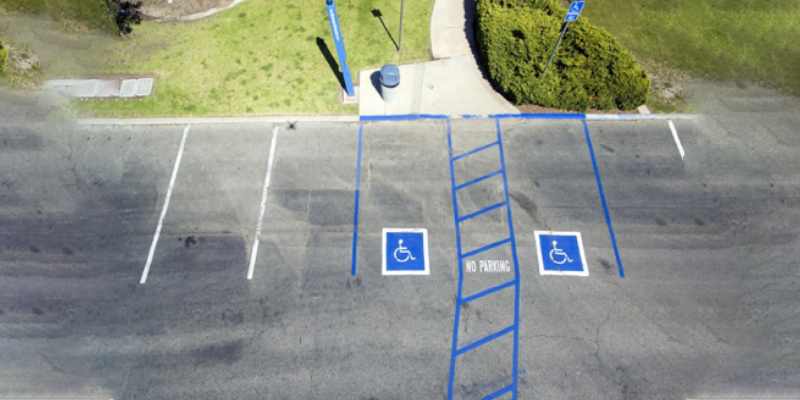
Sometimes the government doesn’t exactly give you condensed, easy-to-read, important information. Often many important rules and regulations may be lost or hard to fully understand. Disabled parking in Montana is no exception. There’s a lot you need to know! This guide will navigate you through everything you need to know about disabled parking in Montana.
Who Qualifies For Disabled Parking In Montana?
Each state has its own set of rules and regulations for who can qualify for a disabled parking permit. This can add to the confusion surrounding if you can qualify for one in your state or not. Here are Montana’s qualifications:
- You must have a disability from an acute sensitivity to vehicle emissions.
- You cannot walk more than 200 feet without having to stop to rest.
- You must be severely limited in your ability to walk because of an arthritic, neurological, or orthopedic condition.
- You cannot walk without the use of an assisting device. These include wheelchairs, prosthetic devices, another person, braces, or canes.
- You must have a disability from another disease or physical condition that limits or impairs your mobility.
- You have an impairment because of cardiac disease or condition to the extent that your limited are classified under Class III or Class IV as defined by the standards adopted by the American Heart Association.
- You are restricted by lung disease to the extent that forced expiratory respiratory volume, measured by spirometry, is less than one liter per second. Or, that your atrial oxygen tension is less than 60 mm/hg on room air at rest.
Understandably, some of these qualifications can be confusing as to whether you qualify or not. Part of the process of obtaining a disabled parking permit is having your physician complete a section of your application. This is a great time to have a talk with them about these qualifications and which ones you meet and why.
So, who can use disabled parking spaces?
Those who have a disabled parking permit can park in disabled parking spaces. However, there are some exceptions.
- Your vehicle must be displaying a disabled parking permit to legally use these designated spaces. Be careful, make sure to remove the permit from your rearview mirror before driving as it can be considered an obstruction to your vision.
- A vehicle that is carrying a person with a physical disability without displaying a disabled parking permit may momentarily use a disabled parking space to load or unload a person with a physical disability. Don’t sweat it if your vehicle doesn’t have a permit and your dropping off or picking up someone who is disabled. You can still use the spot for a moment.
Importantly, you should note that you cannot use specially designated parking areas unless the owner of the permit is present. Even if you have a legally obtained disabled parking permit in your vehicle, it is illegal to use the designated parking spaces unless the owner is present.
It’s also important to note that parking in an access aisle is never permitted. It’s not allowed for those with a disabled parking permit and not allowed for those without. The access aisle is invaluable to those who need the extra room to get in or out of their vehicle. Obstructing it is incredibly rude, and beyond that, it’s also illegal.
Permits And Placards
Montana offers several different types of ways you can possess a disabled parking permit. There are options for both permanent and temporary users. They include:
- Permanent disability placards
- Permanent placards
- Temporary placards
- Extended temporary placards
- Permanent disability plates
Placards are the tags you’ve seen hanging in cars’ rearview mirrors. They may be blue or even a different color depending on the state and type of placard. License plates replace your original license plates on your vehicle and you may only obtain one if you have a permanent disability.
Do I Need To Renew My Permit?
You sure do! However, some types of permits are easier to renew than others. Here’s a small list to explain the differences and what to do:
- Temporary disability placards are valid for six months
- Extended temporary placards are valid for two years.
- Permanent placards are valid for three years. Afterward, they are up for renewal.
- Disabled parking license plates are always valid. Well, they technically need to be renewed, but you automatically do so whenever you renew your vehicle registration each year. It’s as easy as can be.
If you need to renew your placard or plate you must complete the application form again. It’s also formally called Form MV5. The medical certification must also be completed again so it’ll be another visit to your physician.
If you’ve lost your placard or plate or it has been stolen, you must also complete Form MV5 in its entirety again.
It’s also worth noting that temporary disability placards are not able to be renewed. If you need your temporary disability placard longer than it’s valid form, you also have to complete Form MV5 again.
There Is No Expedited Service Permit
Some states, such as Nevada, offer an expedited service permit. This permit has its special application that you must fill out. It allows you to receive expedited services from the state.
However, Montana doesn’t offer a wide variety of disabled parking permits. Perhaps one day the state will think differently.
Conclusion
By now you should know the ins and outs of disabled parking permits in Montana. The rules and regulations can be tricky if you’re unfamiliar with them. However, they’re easy to understand once you’ve begun to learn them.
If you’re ever confused, the Montana Motor Vehicle Department states that you’re welcome to contact them by email or phone for more questions. Their email is [email protected]. You can reach them by phone at (406) 587-0461.